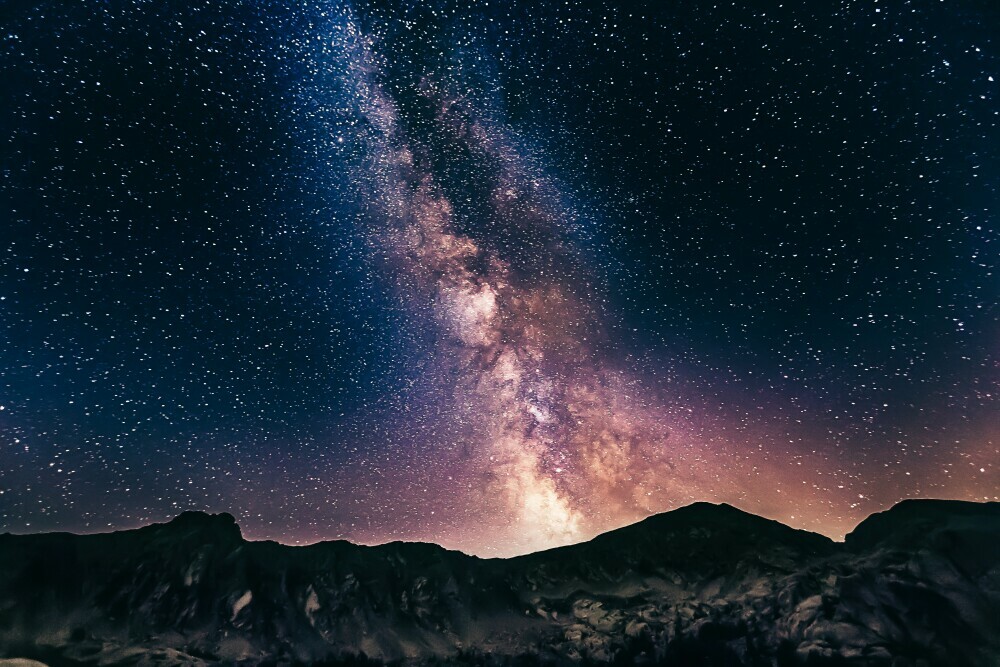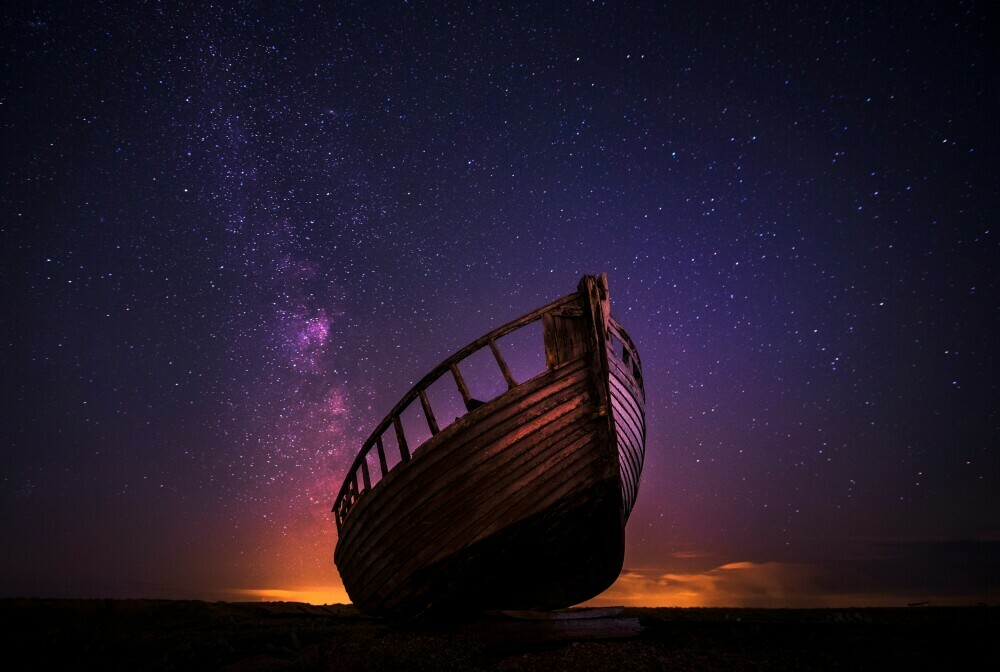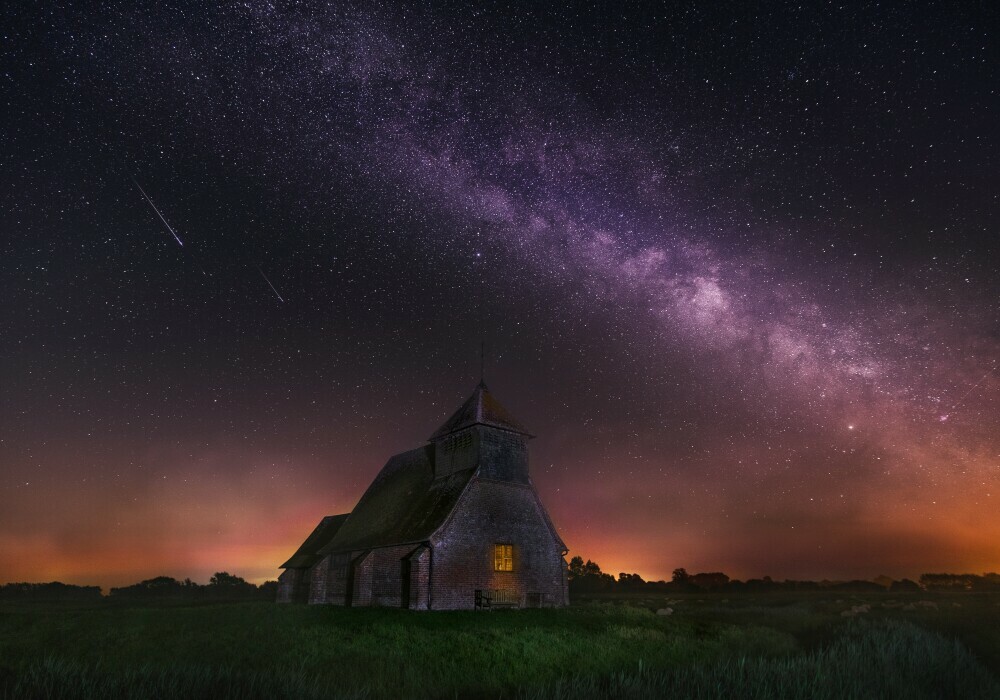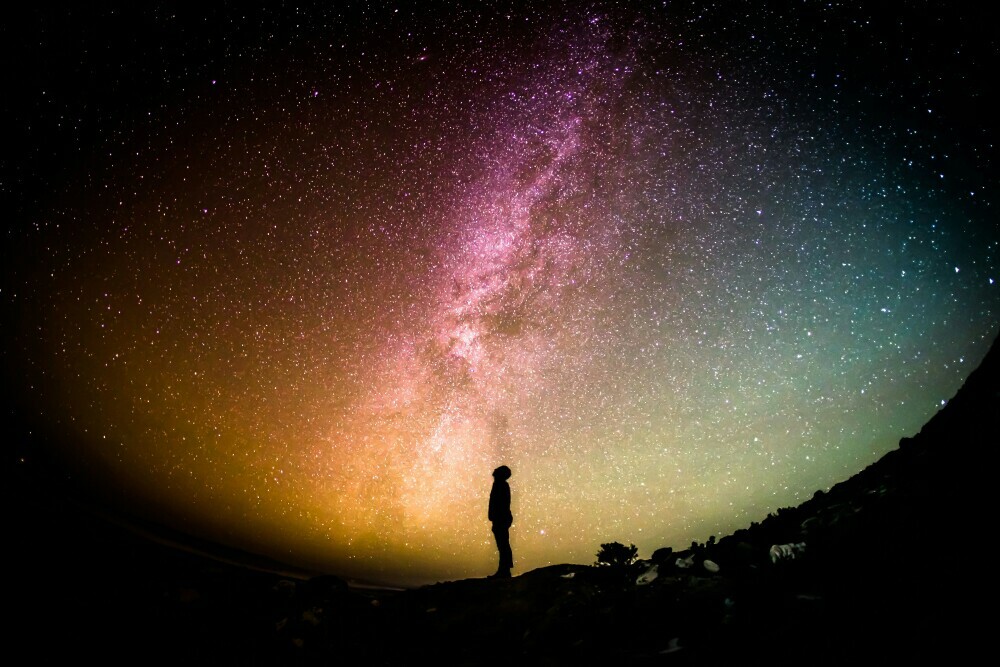 Denis Degioanni. (2018) Tende, France [Photograph]. Unsplash
Denis Degioanni. (2018) Tende, France [Photograph]. Unsplash
Imagine a world where every star in the cosmos is visible to the naked eye, where the Milky Way stretches across the sky in full splendor, unobscured by the glow of artificial light. This is the experience ‘Under the Stars’ promises, a rare privilege reserved for those dedicated to the celestial chase. I’m here to guide you on this exclusive journey.
As we seek out those rare oases free from light pollution, we recognize that the ability to gaze at an untainted night sky is not just a treat for avid stargazers or photographers; it’s a profound connection to our ancestors, a link to their awe and wonders at the cosmos, and a rapidly diminishing resource in our modern world.
Acknowledging the urgency, this article pulls together essential advice on locating dark sky spots where you can indulge in stargazing, night sky photography, or bask in the galaxy’s natural glow. The quest for these locations is more than a personal journey; it contributes to preserving the night’s splendor for future generations.
Besides, this conversation touches on finding spots and your crucial role in contributing to their preservation. Ready to enter the night and embrace the stars as they were meant to be seen? Let’s set the stage for an expedition in search of the perfect dark canvas for astronomical observing sites. Our journey offers more than sights; it symbolizes your commitment to dark sky conservation.
Seeking Darkness: Strategies for Locating Pristine Dark Sky Havens
 Zoltan Tasi. (2017) Sleepy Boat, United Kingdom [Photograph]. Unsplash
Zoltan Tasi. (2017) Sleepy Boat, United Kingdom [Photograph]. Unsplash
As city lights continue to drown out the stars, discovering a location where the Milky Way is vividly sprawled across the night sky has become a valued rarity. In this modern era, identifying pristine dark sky spots is not just about venturing far from urban areas; it’s also about knowing how to utilize technology and community resources to pinpoint the best stargazing locations.
One practical starting point is addressing the enemy of stargazers: light pollution. Sites such as the Dark Sky Finder or light pollution maps available in various mobile apps provide a visual guide for escaping the luminous grasp of cities. I recommend looking for areas colored in darker shades on these maps as they indicate lesser light pollution and potentially clearer night skies.
Reaching out to local astronomical societies is another smart move. Members of these communities often share a passion for the stars and usually have a treasure trove of information on optimal astronomical observing sites. Engaging with them could give you access to valuable insights and even private locations not commonly known to the public.
Learn about the Bortle scale—an astrophotographer’s best friend for a scientific touch. It classifies the night sky’s darkness levels from one to nine and helps to set realistic expectations of what heavenly bodies you might witness. A spot rated as a one on the Bortle scale promises a night sky untouched by light contamination, a genuinely pristine stargazing canvas.
As we move forward, it’s essential to remember that these dark refuges require more than locating. They also demand planning to ensure that the time spent UNDER THE STARS is as astonishing as the cosmos above. Ensuring you have the right gear and knowledge can transform a night of looking up into an experience of awe.
Planning Your Astronomical Adventure: Best Practices for Stargazers
 Zoltan Tasi. (2018) United Kingdom [Photograph]. Unsplash
Zoltan Tasi. (2018) United Kingdom [Photograph]. Unsplash
Successful stargazing isn’t just about finding the right spot; it’s also about preparation. Planning can go a long way if you’re a casual observer or a die-hard enthusiast. In this section, I’ll guide you through what you should consider making the most of your astronomical activities.
Before heading out, ensure you have the appropriate gear. A reliable telescope or a pair of binoculars is crucial for bringing distant cosmic objects into view. Also, consider a red-light flashlight to maintain your night vision and a star chart or an app to help navigate the celestial sphere.
Proper attire is equally important. Nights under the stars can get chilly, so dress in layers. Comfort is critical, especially if you plan on spending several hours outside. Bring a chair or a blanket; your neck will thank you for the support during prolonged periods of looking up.
Now, let’s talk stargazing etiquette. When you visit shared dark-sky sites, remember you are part of a community. Use dim lighting, be mindful of noise levels, and share the view. It’s not just polite; it fosters an environment where everyone can appreciate the wonders of the night sky together.
Weather is another crucial factor. Clear, moonless nights are ideal for stargazing. Plan your outing around the new moon phase, and always check the forecast beforehand. Remember that patience is a virtue in astronomy; sometimes, the clouds will clear if you wait.
Finally, timing is everything. The night sky changes with the seasons, and so do the celestial highlights. Research what astronomical events or constellations will be visible and plan your excursion accordingly. Catching a meteor shower or a planet at its brightest can be a spectacular reward for your efforts.
Conservation and Community: The Path to Preserving Our Night Skies
 Greg Rakozy. (2015) Spiral Jetty, USA [Photograph]. Unsplash
Greg Rakozy. (2015) Spiral Jetty, USA [Photograph]. Unsplash
As a passionate advocate for the stars, you recognize the magic each twinkling light in the night sky holds for humanity. But to keep that magic alive, active engagement in dark sky conservation is crucial for the present and future generations. By valuing and protecting these rare oases of darkness, you contribute to a legacy that goes beyond mere observation—it’s about preserving a natural wonder.
Involvement in dark sky initiatives can be manageable; small steps can significantly impact. Start locally by advocating for better lighting policies in your community or participating in local events that raise awareness about light pollution. Every action counts—from installing dark-sky-friendly lighting at your home to working with town councils to enact change.
On a broader scale, aligning with organizations like the International Dark-Sky Association can amplify your efforts. These groups work tirelessly to protect night skies worldwide through education, guidelines, and community grants. By joining them, donating, or simply spreading the word, you’re contributing to a vital cause.
Encourage trips to astronomical observing sites and night sky destinations as part of dark sky tourism. It’s a powerful way to show the economic value of pristine skies, fuel local economies, and reinforce the importance of conservation efforts. Your travel choices can drive demand for authentic stargazing experiences and promote global awareness.
Collectively, we can safeguard our night skies. As astronomical tourism grows and the quest for serene stargazing spots continues, remember that the night sky’s beauty is not a resource to be depleted but a celestial canvas to be cherished and protected.
